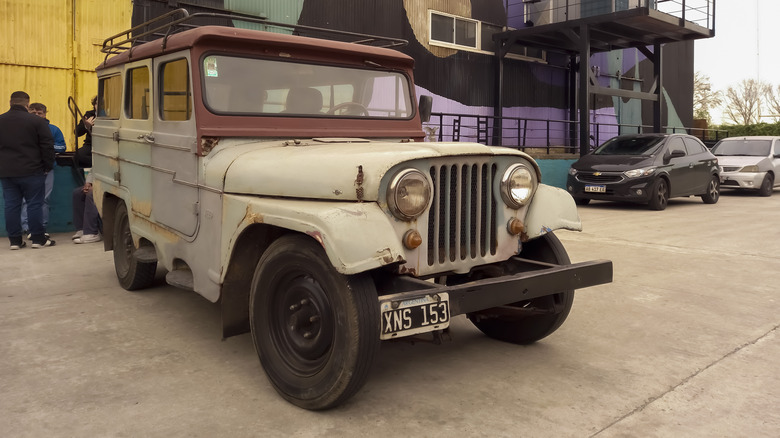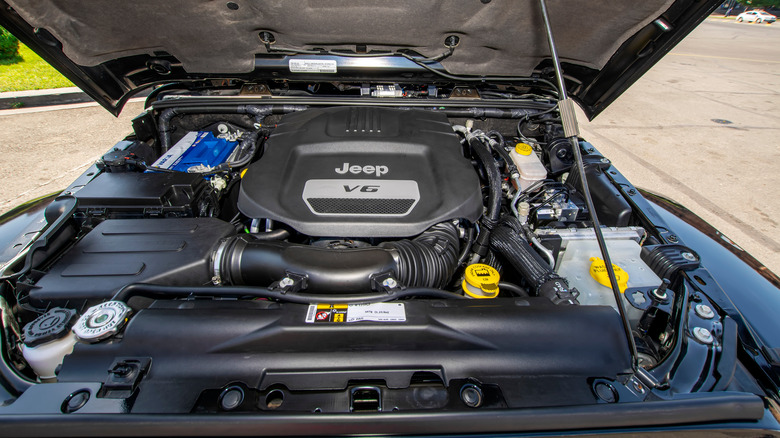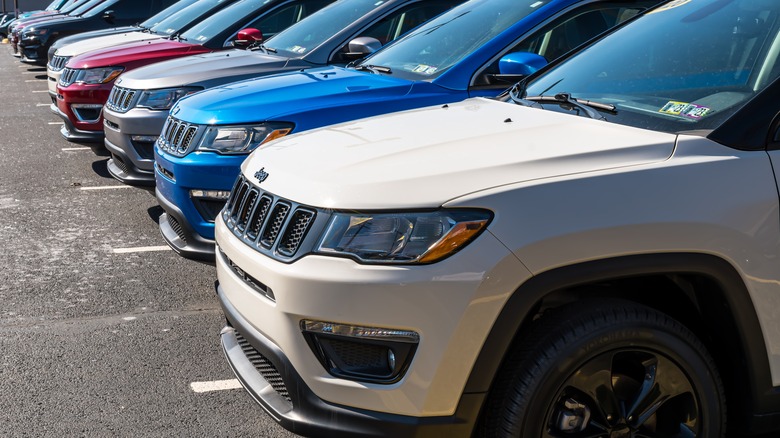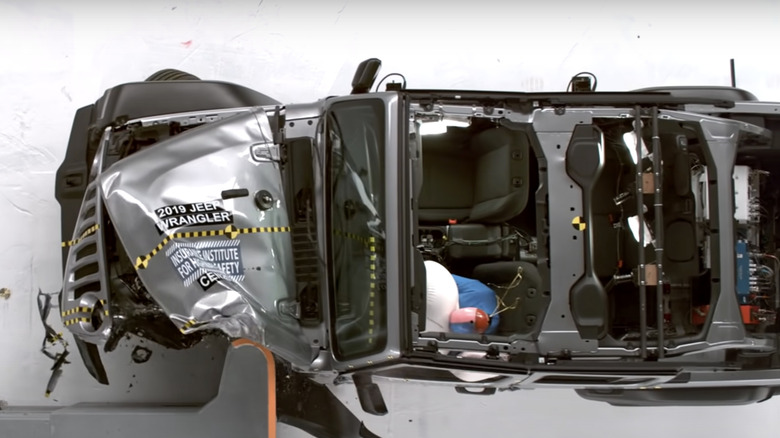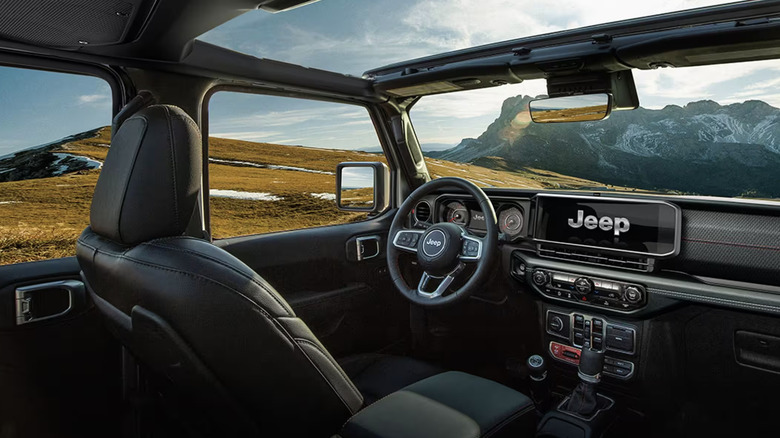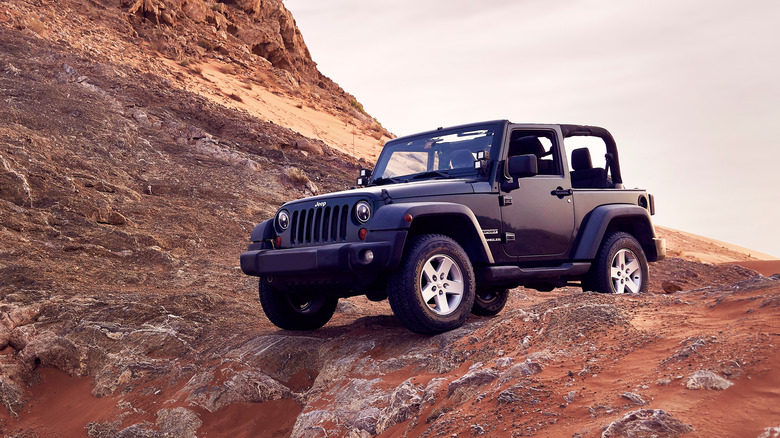5 Of The Biggest Changes Made To Jeeps Over The Last 70 Years (And One Thing That's Stayed The Same)
The Jeep brand originated in World War II when the Army wanted a light-duty off-road vehicle to replace the Ford Model A it had been using in the field. Willys Overland won the competition to build the Army's next battlefield vehicle, and Willys' first civilian Jeep, the CJ-2A, was marketed to construction workers and farmers once the war ended. The CJ line evolved steadily stateside during the Vietnam and Korean Wars and through 1987 when the Wrangler replaced the CJ-7. Along the way, the Jeep brand changed hands several times, passing to Kaiser in 1953, AMC in 1969, and Chrysler in 1987. Jeep is now under the Stellantis umbrella, which acquired Chrysler and all its brands in 2021.
While the Wrangler remains the most identifiable Jeep model, the Jeep lineup has expanded to include a wide range of SUVs like the Cherokee, Wagoneer, Renegade, and Compass. While the introduction of new models is the most obvious change to the Jeep brand, even the signature model, the Wrangler, has seen some substantial changes from its birth during the Reagan administration, let alone its military-inspired CJ origins.
Yet despite all these significant ways Jeeps have evolved in the past seven decades, in one respect, the current crop of Jeeps produced by Stellantis is fundamentally similar to the models produced by Willys Overland during the Korean War era. Let's start with five of the major changes.
More engine choices
The first Jeep CJ models came with any engine you wanted, as long as it was an L-head four-cylinder. Kaiser started using Buick's Dauntless 225 cubic inch straight-six in 1965, and in 1971, AMC implemented its own 232 cubic inch inline-six, later boosting its displacement to 258 cubic inches.
All of those engines were carbureted, but in 1991, the 258 got new heads and electronic fuel injection and became the 242 cubic inch (4.0-liter) straight six that would serve as the stalwart of the Jeep lineup until 2006. With the introduction of the Cherokee, Wagoneer, and pickup truck models in the 1970s came 304, 360, and 401 cubic inch V8 options.
2023 Wrangler buyers have five engine options, ranging from a 2.0-liter turbocharged four-cylinder to a 6.4-liter Hemi V8 that produces 470 horsepower and 470 pound-feet of torque. There are two V6 options: a gas-fueled 3.6-liter Pentastar V6 and a 3.0-liter EcoDiesel. There's even a 2.0-liter turbocharged hybrid four-cylinder option that offers 49 MPGe, the best fuel economy of any Wrangler model in history.
More sophisticated 4WD systems
Although even the earliest military Jeeps were able to navigate sandy, muddy, and rocky terrain with relative ease, over the past 70 years, the transfer cases and differentials in Jeep vehicles have evolved along with the engines to help make them even more off-road capable. CJ-2A models came with a two-speed Spicer Dana model 18 transfer case with separate levers to shift from two to four-wheel drive and from high to low range. Jeep upgraded to the Dana model 20 in 1962, and the '80s CJ models got the new Dana 300.
Jeep used an array of part-time 4WD systems throughout the evolution of the CJ, Wrangler, and Cherokee and put the full-time Quadra-Trac system underneath full-sized Jeeps and CJ7s in the mid and late '70s as well as Cherokees and Wranglers between 1984 and 1987. While Spicer's Dana axles remain underneath Jeeps to this day, Jeep used transfer cases made by Borg-Warner in Quadra-Trac models and switched the rest of its line to New Process branded transfer cases beginning in 1980.
In the '90s and 2000s, more sophisticated systems that could respond to quickly changing terrain were introduced. Current Jeep 4WD systems include several part- and full-time options with limited-slip or full-locking differentials, making everyday driving and serious off-roading easier on the driver. Some models, like the Renegade Trailhawk and Cherokee, come with Jeep's Active Drive system, which has a 20:1 crawl mode for low-speed off-roading and an electronic traction management system with several different driver-selectable terrain modes.
A much wider selection of models
Until 1963, when Kaiser introduced the Gladiator pickup and Wagoneer SUV, the only Jeeps available were utilitarian CJs. Once AMC acquired the brand, the lineup expanded to include the Cherokee and Grand Wagoneer. Chrysler further broadened the options available to Jeep buyers, introducing the Liberty in 2002, the Compass and Patriot in 2007, and the Renegade in 2014.
Jeep also recently resurrected the Wagoneer and Grand Wagoneer nameplates after both models were shelved in 1991. The Cherokee badge has a more complicated history, as the Liberty was considered the third generation Cherokee in North America from the time of its introduction until the fourth generation Cherokee debuted in 2008.
The CJ line was transitioned into the Wrangler in 1987, bringing with it a controversial and temporary switch from round to rectangular headlights. Despite the huge expansion in Jeep's offerings, the Wrangler remains the brand's flagship through updates in 1996, 2006, and 2018. With each new generation came modern refinements that separated the Wrangler from its military roots, like automatic transmissions, removable lightweight roof panels, and Bluetooth audio systems.
More safety features
Jeeps have also gotten safer to drive over the years. Some of the earliest CJ models didn't even come with seat belts, and it wasn't until 1968 that automakers needed to install them in new vehicles. The following year, Jeep began offering a roll bar as a factory option on the CJ5 for an additional $45.09.
In 1992, the YJ generation Wrangler's roll bar was redesigned to protect the rear passengers and allow for the mounting of rear seat belts. The 1993 Grand Cherokee was the first SUV to be outfitted with a driver's side airbag, and the 2023 Grand Cherokee was awarded the Top Safety Pick Plus honor by the Insurance Institute for Highway Safety.
2024 Wranglers come with side curtain airbags for front and rear passengers, adaptive cruise control, collision warning, blind spot monitoring, and rear cross-path detection systems. Current Grand Cherokee models have all of these features, plus an active lane-keeping system, thermographic and infrared night-vision technology, and a drowsy driver detection system.
More refined interiors
Modern Jeeps are not only safer to drive and ride in than their World War II-era counterparts, but current models are also more comfortable and packed with high-tech systems that have evolved since the debut of the first Jeep models. Those early CJs had low-backed bucket seats and no sound-deadening material, and a radio wasn't available until 1973.
Air conditioning became an option on the CJ5 in 1975, although many CJ owners opted for the free climate control solution of removing the top and doors instead. Jeeps slowly got more driver- and passenger-friendly as the Wrangler evolved, and Jeep expanded its line to include the Cherokee, Wagoneer, and other fully enclosed SUVs.
Jeep's current vehicles include features like a touchscreen infotainment system with a smartphone app to manage certain functions and monitor your vehicle remotely, as well as Apple CarPlay and Android Auto connectivity and a rear seat camera to keep an eye on your kids during long family road trips.
Exterior cameras also feed images to the digital rear-view mirror on some models if your view is obstructed, and even Wranglers now come with heated power-adjustable leather seats.
Jeeps are still off-road beasts
Just because Jeeps have modern smartphone connectivity and comfortable cabins doesn't mean they have compromised at all when it comes to off-road capability. Four current models display Jeep's "Trail Rated" Badge, which means they have demonstrated their ability to meet certain benchmarks concerning traction, water fording, maneuverability, articulation, and ground clearance. The current Jeeps that meet this standard are the Wrangler, Cherokee, Grand Cherokee, and Compass.
This capability comes from a mix of tried-and-true components like the 2024 Wrangler's full-float Dana 44 rear axle and newer systems like manually controlled lockers, limited slip differentials, electronic front sway bar disconnect, and the aforementioned driver-selectable terrain management system.
Since 2003, Jeep has offered a Wrangler Rubicon model with locking Dana 44 axles at both ends and a low-range 4:1 transfer case for rock crawling. Current Wrangler Rubicon models also come with an 8,000-pound Warn winch in the front bumper, although with the Rubicon's off-road chops, you'll probably be using it more to rescue other vehicles than to pull yourself out of trouble.
